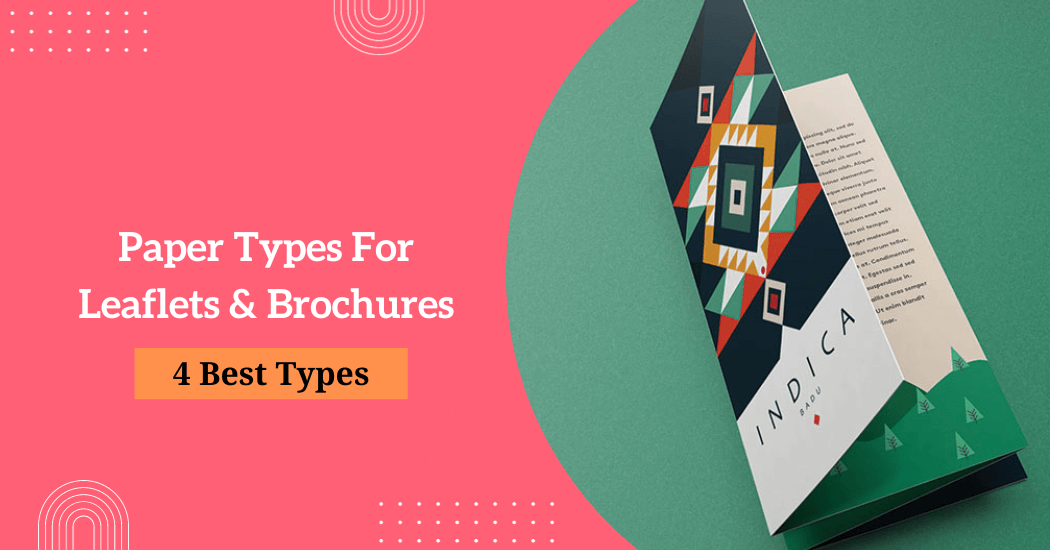What paper is used for brochures printing?
If you’re creating brochures for marketing and promotional purposes, knowing what paper to print them on is essential. Not only will the right kind of paper help your print job look professional but choosing the wrong type can result in a poorly made product that fails to have maximum impact. But with so many different papers available out there today, it can be difficult to determine which one will work best for your brochure printing needs.
In this blog post, we’ll answer the question: what paper are brochures printed on? We’ll take an in-depth look at some of the most popular options and explore why each type makes sense for various commercial printing goals. So if you want to make sure your next batch of impressive leaflets stands out from the competition, read on!
4 Best Paper Types to Use in Leaflets and Brochures
When it comes to brochure printing, there are a variety of paper types that you can choose from. Each type has its unique characteristics and is designed for different purposes.
Here are some of the most common papers used for brochure printing:
1) Glossy paper
Glossy paper has a shiny and reflective coating that gives it a smooth texture and a polished look. It is great for full-color prints and photographs, as it makes colors appear vibrant. Glossy paper is often used for brochures that require high-quality images, such as travel or fashion brochures. However, it can be prone to fingerprints and glare, so it may not be the best choice for brochures that will be handled frequently or viewed under bright lighting.
Benefits
- Vibrant colours and high-quality image reproduction
- Professional and eye-catching appearance
Drawbacks
- Prone to fingerprints and glare
- Limited use for text-heavy designs or brochures viewed under bright lighting
2) Matte paper
Matte paper has a non-glossy finish and is often used for brochures that require a more understated or sophisticated look. It is ideal for text-heavy designs as it reduces glare and makes reading easier on the eyes. However, the lack of gloss can make colors appear less vibrant, so it may not be the best choice for brochures that heavily rely on visual elements.
Benefits
- Vibrant colours and high-quality image reproduction
- Professional and eye-catching appearance
Drawbacks
- Prone to fingerprints and glare
- Limited use for text-heavy designs or brochures viewed under bright lighting
3) Recycled paper
If you want to showcase your brand’s commitment to sustainability, consider using recycled paper for your brochures. This type of paper is typically made from post-consumer waste, such as old newspapers and magazines and has a rougher texture compared to glossy or matte papers. While it may not be the best choice for highly detailed designs, using recycled paper can help reduce your carbon footprint and appeal to environmentally-conscious consumers.
Benefits
- Vibrant colours and high-quality image reproduction
- Professional and eye-catching appearance
Drawbacks
- Prone to fingerprints and glare
- Limited use for text-heavy designs or brochures viewed under bright lighting
4) Cardstock paper
Cardstock paper is a heavyweight and durable material that is commonly used for brochures, flyers and business cards. It has a thick, stiff texture which gives it a professional look and feel. Cardstock paper is available in various finishes such as glossy, matte or uncoated, making it versatile for different design needs. However, due to its thickness, it may not be suitable for folding or booklet-style brochures.
Benefits
- Professional and durable material that gives brochures a high-quality look and feel
- Versatile in terms of finishes and weight options
Drawbacks
- May not be suitable for folding or booklet-style brochures due to their thickness
- Limited use for designs that require a more lightweight paper material.
What factors to consider when choosing paper on brochures printed?
| Factors | Description |
|---|---|
| Purpose and audience | The purpose of the brochure and the target audience it is intended for should be considered when choosing the type of paper. For example, a brochure promoting a luxury product may benefit from glossy paper to showcase high-quality images, while a brochure for an eco-friendly brand may be better suited for recycled paper. |
| Budget constraints | The budget for the brochure printing project is an important factor to consider. Glossy paper tends to be more expensive than matte or recycled paper, so if you have a tight budget, it may be better to opt for a more affordable option. |
| Printing techniques | Certain types of paper may work better with certain printing techniques. For example, glossy paper is ideal for digital printing, while matte paper may work better with offset printing. It’s important to discuss your printing options with your print provider to ensure the best results. |
| Sustainability concerns | If sustainability is a top priority for your brand, then choosing recycled or eco-friendly paper for your brochures would align with your values and appeal to environmentally-conscious consumers. However, keep in mind that not all types of paper are suitable for all designs and printing techniques. |
Final Thoughts
When it comes to brochure printing, the choice of paper plays a crucial role in determining the final product’s quality, appearance and feel. Various types of paper options are available, each with its unique characteristics, benefits and drawbacks. This includes glossy paper, matte paper, recycled paper and cardstock paper.
The choice between these paper types depends on several factors such as the purpose of the brochure, the target audience, budget constraints and sustainability concerns. This guide aims to provide a comprehensive understanding of the different types of paper used for brochure printing and how to choose the best option to effectively communicate your brand message and appeal to your target audience.

